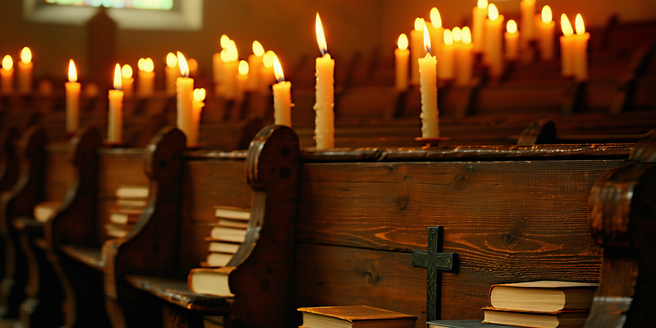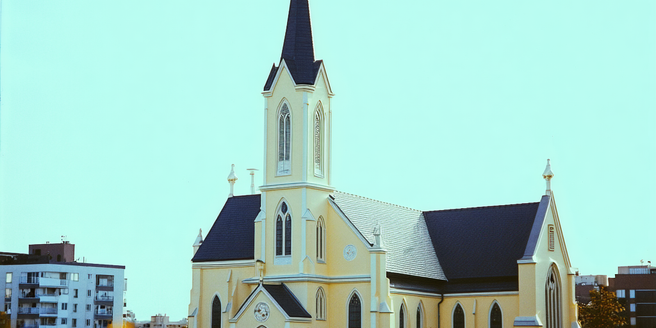Origins and Historical Context of the Trinity Symbol
The Trinity symbol, often depicted as an interlocking knot, has origins that predate Christianity. It is believed to have been used by Celtic tribes as a potent religious and cultural emblem long before the arrival of Christian doctrine in Europe. When early Christians began evangelizing these regions, they often adopted existing symbols and imbued them with new meaning. The triquetra, as it is known, was seamlessly incorporated into Christian symbolism to represent the Holy Trinity—Father, Son, and Holy Spirit. This appropriation served not only as a way to convert pagans but also to instill familiar cultural touchstones within the nascent Christian community. Understanding this historical context enriches the appreciation of the symbol in modern times and highlights the adaptive and syncretic nature of early Christian iconography in its mission to spread its faith.
Theological Significance in Christian Doctrine
The Trinity is a cornerstone of Christian theological doctrine, encapsulating the concept of God being three distinct persons—Father, Son, and Holy Spirit—yet a single divine essence. This belief, formalized during early church councils such as Nicaea and Constantinople, underscores its foundational importance. The Trinity is seen as a profound mystery that cannot be fully comprehended by human reason alone, representing a divine relationship of love, unity, and coeternal existence. It is a representation of God’s loving nature and his relational being. The symbol of the Trinity visually reinforces this complex theological construct, providing a tangible representation of an otherwise abstract idea. Thus, the Trinity symbol not only beautifies liturgical spaces but also serves as a didactic tool, inviting believers to delve into deeper spiritual contemplation and understanding of their faith.
Variations and Interpretations Across Denominations
While the Trinity is a central tenet in most Christian denominations, interpretations and emphases can differ, reflecting varying theological nuances. For instance, the Roman Catholic Church elaborates on the relational dynamics within the Trinity, emphasizing the procession of the Spirit from both Father and Son. Eastern Orthodox Christianity, however, places focus on the mystery of the Trinity’s coeternal nature, often resisting analytical parsing. Protestant denominations, while diverse, generally maintain belief in the Trinity but might engage it more as a doctrinal affirmation of faith rather than an exhaustive theological study. Furthermore, some newer Christian movements and sects question traditional Trinitarian doctrine, offering unorthodox interpretations. Each denomination contributes to the rich tapestry of Christian thought, demonstrating a spectrum of understanding and reflection that the Trinity symbol manages to distill into a unified image, transcending individual interpretation.
Symbolism in Christian Art and Architecture
Throughout history, the Trinity symbol has been a prevalent motif in Christian art and architecture. It can be found in various forms, including the triquetra in stained glass windows, on church altars, and as carvings in medieval cathedrals. In the Gothic and Renaissance periods, many churches and cathedrals were designed with elements symbolizing the Trinity. For example, three-leaved clovers and three-looped knots were commonly used to represent the Holy Trinity’s triune nature. The use of this symbol in architecture not only serves a decorative purpose but also carries theological significance, reminding the faithful of the complexity and unity of the divine. Such imagery acts as a visual sermon, teaching the principles of the Trinity at a glance and connecting the congregation with the spiritual teachings housed within their sacred spaces.
The Trinity Knot: Cultural and Religious Crossovers
The Trinity knot, or triquetra, is a powerful symbol that transcends its religious symbolism in Christianity, representing the interplay of spirit, nature, and the cosmos in various cultures. In Celtic traditions, it signifies the unity of earth, sea, and sky or the interconnectedness of life stages. This cultural crossover enriched the Christian interpretation, integrating local traditions with theological concepts. As such, it represents a dialogue between different worldviews and belief systems. In Christianity, the knot represents the Holy Trinity, a relationship of coexistence and eternity. This synthesis illustrates how religious and cultural icons can transform and find new meanings while maintaining core themes of unity and balance. The Trinity knot serves as a testament to Christianity’s historical and cultural adaptability, highlighting the blending of spiritual narratives that bridge diverse belief systems, enriching their traditions and understandings.
Common Misunderstandings and Clarifications
Misunderstandings about the Trinity often arise from its complexity and abstract nature. A common misconception is viewing the Trinity as three separate deities rather than one God in three persons, leading to accusations of polytheism from external observers. Others may interpret the Trinity symbol too literally, assuming it conveys a simplistic or outdated theological concept. Delving into historical creedal statements and theological expositions helps clarify these misconceptions. Early church fathers employed metaphors, like the sun’s warmth and light representing the Son and Spirit, to articulate this mystery. Such imagery, while helpful, never fully encapsulates the Trinity’s essence. Educational efforts within congregations focus on these subtleties, aiming to deepen understanding through study and discussion, ensuring the faithful appreciate the profound implications of the triune Godhead as a unified and singular divine essence.
The Trinity Symbol in Modern Christian Worship
The Trinity symbol continues to hold a prominent place within contemporary Christian worship, providing a timeless visual representation of core theological truths. Many churches incorporate the symbol into their liturgical elements, such as baptismal fonts, altar decorations, and stained glass. Its use in modern worship settings serves as a constant reminder of the presence of Father, Son, and Holy Spirit, weaving the fabric of Christian community and devotion. Congregational practices, like the recitation of the Nicene Creed, reaffirm the commitment to Trinitarian doctrine. Cultural and interdenominational shifts have seen adaptations in worship music and art, embracing the Trinity as a theme of unity and diversity. Thus, the symbol remains an influential emblem in the life of the church, fostering ecclesial identity and personal faith journeys through its enduring presence and significance.
Influence on Christian Theological Debates
The Trinity has long been central to theological debates within Christianity, shaping doctrinal development and ecclesiastical structure. From early ecumenical councils addressing Arianism to modern discussions on gender and language in Trinitarian terms, the concept has profound implications. The symbol provides continuity through such debates, anchoring them to a visual representation that transcends linguistic and cultural shifts. Discussions often explore how the Trinity influences ecclesial hierarchy, sacramental theology, and understandings of community and relationality. In contemporary dialogue, theologians assess the balance between emphasizing the Trinity’s mysterious unity versus its internal distinctions. These debates drive theological progress and ensure that Trinitarian doctrine remains relevant and thoughtfully considered across generations. The symbol of the Trinity thus serves not only as a teaching tool but also as a guiding force in the evolution of Christian theological reflection and practice.
Educational Approaches to Teaching the Trinity
Teaching the Trinity poses unique challenges given its abstract nature, requiring educators to balance doctrinal accuracy with approachable explanation. Churches and religious educators employ various methods to convey Trinitarian concepts effectively. Catechesis often involves visual aids, such as the Trinity symbol, to engage learners and provide a tangible representation of the doctrine. Interactive discussions and analogies, such as the “water, ice, and steam” model, help demystify the idea while highlighting the Trinity’s unity and diversity aspects. Faith development programs for different age groups tailor their approaches, ensuring that complexity is introduced progressively. Sermons and theological seminars further expand on the nuances of the Trinity, inviting congregants to ponder its mystery. By prioritizing clarity and exploration, educational efforts foster deeper understanding and appreciation of this fundamental Christian belief, equipping believers to articulate their faith in meaningful and informed ways.









